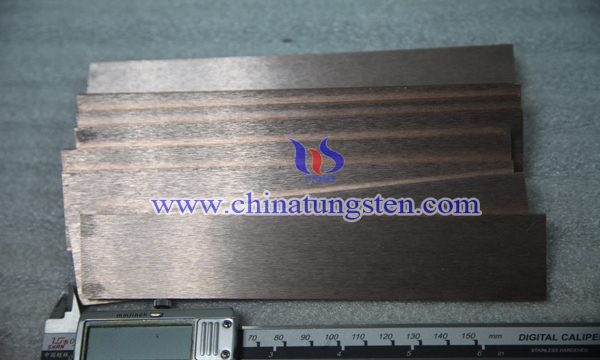Tungsten Copper Gradient Heat Sink Material Preparation by Infiltration Method
- Details
- Category: Tungsten Information
- Published on Friday, 26 January 2018 23:00
Tungsten copper composite is one of the most widely used heat sink materials at present. It is made up of high conductivity copper and refractory metal tungsten. They neither dissolve each other nor form intermetallic compounds, so they are also called pseudo alloys.

Tungsten copper gradient heat sink material is a tungsten copper alloy that changes along the thickness direction. The design of W-Cu gradient heat sink material is mostly based on the reverse design principle. First, the actual structure and working conditions of the material are determined. Based on these information, the performance and microstructure of the transition and the preparation and evaluation methods are selected. After determining the composition of each layer, the theoretical density, volume modulus, thermal conductivity and thermal expansion coefficient of the gradient layers can be obtained according to the Kern mixing rule. In general, the principle of the preparation of the gradient heat sink seems to be easy and complex. Infiltration method is one of the most common methods for the manufacture of tungsten copper composites. The tungsten copper gradient heat sink material is made by melt infiltration method. Generally, porous particles with gradient distribution are obtained by pressing different layers of tungsten powder and sintering. Then W-Cu gradient functional material is obtained by infiltrating copper.
Gradient tungsten skeleton is the key to the preparation of W-Cu functionally gradient material. By using the reverse design principle to determine the actual structure and working conditions of the material, we can get the best tungsten gradient skeleton by selecting the appropriate pore forming agent and tungsten particle size. The key process of the infiltration method is the preparation of the tungsten skeleton, in which the grain size of tungsten powder and the pressing of the blank have the role of the overall situation.
Infiltration method to produce ordinary heat sink material theoretical density of 97% -98%, but the gradient heat sink material infiltration method of the operation more stringent, in the actual operation, it is possible that the copper phase is not evenly distributed in the copper penetration, and it is easy to form a closed hole inside the tungsten body. The copper phase can not completely fill the pores, leading to low thermal conductivity of the prepared materials, and removing excess copper from the machine by machine processing, which increases the machining cost and reduces the finished product rate.
- Tungsten Manufacturer & Supplier, Chinatungsten Online: www.chinatungsten.com
- Tungsten News & Prices of China Tungsten Industry Association: www.ctia.com.cn
- Molybdenum News & Price: news.molybdenum.com.cn
- Tel.: 86 592 5129696; Fax: 86 592 5129797; Email: sales@chinatungsten.com



 sales@chinatungsten.com
sales@chinatungsten.com